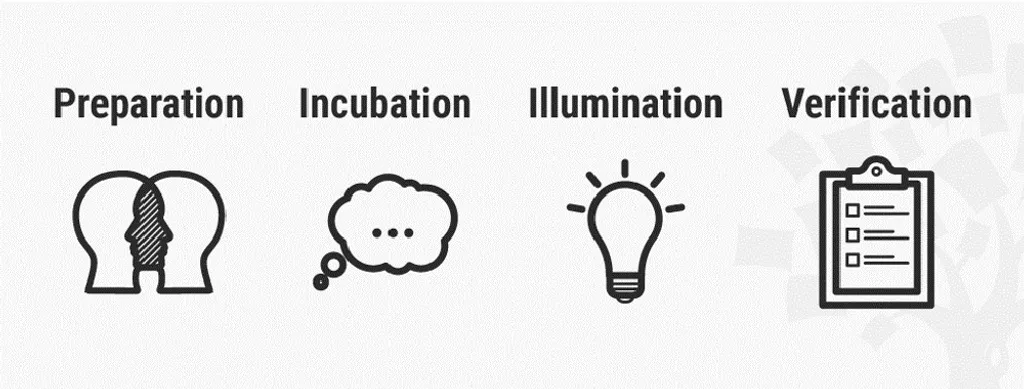Creativity is the ability to produce new and original ideas, thoughts, things, or new connections between existing ideas or concepts.
Creativity is often associated with the arts, such as painting, writing, or music, but it is not limited to these fields. Also can be found in many different areas, including business, design, science, and everyday life.
For example, a scientist might use creativity to come up with a new hypothesis or approach to a research problem, while an entrepreneur might use creativity to come up with a new product or service.
Many factors can influence creativity, including education, experience, and the environment in which one is working. Some people are naturally more creative than others, but creativity can be developed and nurtured through practice and exposure to new ideas and experiences.
In summary, creativity is the ability to generate new and original ideas or things, and it is a valuable skill in many different fields and situations.
The creative process
- Preparation: This stage involves gathering information, researching, and setting the stage for creativity. It might involve setting goals, defining a problem, or identifying the resources that will be needed. This stage is important because it helps to focus the creative effort and provides a foundation for the work that will be done.
- Incubation: During this stage, the information and ideas gathered during the preparation stage are allowed to “incubate” in the mind. This might involve taking a break from the task or letting the ideas marinate. The incubation stage is important because it allows the mind to process and make connections between the information and ideas that have been gathered.
- Illumination: This is the “aha” moment when ideas and concepts start to come together and a solution to the problem becomes clear. This stage is often accompanied by a sense of excitement and can be a very productive time.
- Verification: During this stage, the ideas generated during the illumination stage are evaluated and refined. This might involve testing the ideas, seeking feedback, or making adjustments. The verification stage is important because it helps to ensure that the ideas are viable and well-thought-out.
- Implementation: In this final stage, the ideas are put into action and the solution is implemented. This might involve creating a plan for execution, gathering resources, or executing the plan. The implementation stage is important because it brings the creative work to fruition and allows the ideas to be put into practice.
It’s important to note that the creative process is often nonlinear, and it may involve going back and forth between different stages.
It can also be influenced by various internal and external factors, such as motivation, resources, and the environment in which the creative work is being done.
Six ways to improve your creativity
- Take breaks and rest: Taking breaks and getting enough rest can help you rejuvenate your mind and body, which can lead to increased creativity. When you are well-rested and relaxed, you are more likely to have a fresh perspective and be able to come up with new ideas.
- Seek out new experiences: Exposure to new ideas, cultures, and environments can stimulate your mind and help you think in new ways. This can be as simple as trying a new hobby or traveling to a new place.
- Practice brainstorming: Brainstorming is a technique in which a group of people comes together to generate ideas and solutions to a problem. It can be a helpful way to come up with new and creative ideas.
- Use visual thinking: Visual thinking involves using images, diagrams, and other visual aids to help you understand and solve problems. This can be a powerful tool for creativity, as it allows you to see things differently and make connections that may not be obvious otherwise.
- Stay curious: Keeping an open and curious mind can help you see things from different perspectives and come up with new ideas. This involves asking questions and being willing to learn and explore new things.
- Collaborate with others: Collaborating with others can help you see things from different perspectives and come up with ideas that you might not have thought of on your own. It can also be a fun and enjoyable way to stimulate your creativity.
By implementing these strategies, you can improve your creativity and come up with new and original ideas. It’s important to keep in mind that creativity is a process, and it takes time and practice to develop this skill.
Common creativity blockers
Some common creativity blockers include:
- Fear of failure: The fear of failure can be a major barrier, as it can prevent you from taking risks and trying new things. It’s important to remember that failure is a natural part of the creative process and can often lead to learning and growth.
- Lack of motivation: If you are not motivated or interested in a task, it can be difficult to come up with creative ideas. It’s important to find tasks that engage and challenge you to stimulate your creativity.
- Lack of time: Time constraints can be a major barrier to creativity, as they may not allow you to fully explore and develop your ideas. It’s important to set aside dedicated time for creativity and allow yourself the space to think and explore.
- Perfectionism: The desire to produce perfect work can be a creativity blocker, as it can prevent you from taking risks and trying new things. It’s important to remember that creativity often involves trial and error and that it’s okay to make mistakes.
- Limited resources: A lack of resources, such as time, money, or materials, can be a barrier to creativity. It’s important to find ways to work around these limitations and be resourceful to stimulate your creativity.
By recognizing and addressing these blockers, you can better foster and develop your creativity.
It’s important to remember that creativity is a process and that it takes time and effort to come up with new and original ideas.
However, with persistence and dedication, you can overcome these obstacles.
Tips for removing creativity blockers
- Identify the blockers: The first step in removing creativity blockers is to identify what is causing them. Take some time to think about what might be holding you back and what you can do to overcome these barriers. This might involve examining your thought patterns and behaviors, or seeking feedback from others. Once you have identified the blockers, you can start to develop strategies for overcoming them.
- Set aside dedicated time for creativity: Make time for creativity by setting aside dedicated blocks of time for creative work. This can help you avoid the time constraints that can often inhibit creativity. It’s important to make sure that you have enough time to fully explore and develop your ideas.
- Find ways to work around resource limitations: If you are limited in terms of resources, such as time, money, or materials, try to find ways to work around these limitations. This might involve being resourceful and finding alternative solutions or collaborating with others to share resources. It’s important to be creative in how you use your resources to foster creativity.
- Don’t be afraid to take risks and make mistakes: It’s important to remember that creativity often involves trial and error and that it’s okay to make mistakes. Don’t be afraid to take risks and try new things, even if you are not sure they will work. Embrace the idea of failure as a learning opportunity and keep an open mind to the possibility that your mistakes might lead to new and creative ideas.
- Surround yourself with supportive people: Surround yourself with people who are supportive of your creative endeavors and who can help you overcome creativity blockers. This might include friends, colleagues, or mentors who can offer encouragement and advice. Having a supportive network can help you feel more confident in your creative endeavors and give you the motivation to keep going when things get tough.
- Practice mindfulness: Mindfulness involves being present at the moment and paying attention to your thoughts and feelings without judgment. Practicing mindfulness can help you become more aware of your creativity blockers and find ways to overcome them. This might involve taking breaks to meditate or practice deep breathing, or simply taking a few minutes to focus on your breath and clear your mind. By practicing mindfulness, you can become more attuned to your thoughts and emotions, which can help you identify and overcome creativity blockers.
By implementing these strategies, you can remove creativity blockers and foster a more creative environment.
It’s important to remember that creativity is a process and that it takes time and effort to come up with new and original ideas. However, with persistence and dedication, you can overcome these obstacles and improve your creativity.
To continue reading about this topic, please check out the below link:






Leave A Comment